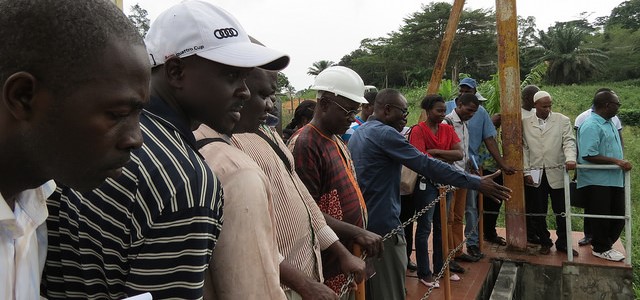Characteristics
The world’s population is increasing steadily and so is the demand for water. One way to improve water security is to become more efficient in how water is used. Water Demand Management (WDM) seeks to encourage better use of existing supplies through economical and efficient management before further increasing supply. WDM comprises a set of interventions and organisational systems intended to increase technical, social, economic, environmental, and institutional efficiencies in the various uses of water.
It especially seeks to:
- Reduce loss and misuse in the units of the water sector (intra-sectoral efficiency);
- Optimise water use by assuring a reasonable allocation between the various users (cross-sectoral efficiency) while taking into account the supply needs of streamflow processes, resource conservation renewal and quality, and the development of on-site uses of water – recreational activities, aquaculture and fisheries, energy, etc.;
- Add more value per unit of resource mobilised;
- Facilitate major financial and infrastructure savings for countries, cities and companies;
- Help ease the pressures on resources, especially to reduce or halt unsustainable exploitation of both renewable and unrenewable resources.
The key for improving efficiency lies in changing peoples' attitudes and behaviour regarding water use. Mechanisms towards that include education and communication such as programmes for users at school, community and institutional level (see Tools C8). Other mechanisms are economic incentives, such as tariffs and charges for water use (domestic, industrial, agricultural), and subsidies or rebates for more efficient water use (see Tools C7).
Regulations and by-laws (see Tools A2) set standards for water consumption, which may explicitly aim to prevent waste, misuse, or undue consumption in public water supply. Another way that by-laws and regulations can help improve water efficiency is by setting standards for the use of water-saving appliances and fixtures. Such regulations stimulate the introduction and further development of lower water consumption technologies.
Technologies for reducing consumption vary by application and context. One example is drip irrigation to replace flood irrigation, another would be retrofitting and pressure reduction. In agriculture, crop patterns can be modified to reduce water use. One practical example is the substitution of water-intense crops for crops that need less water or switching production to higher value crops. Such techniques are especially effective in saving water when combined with reduced fertilizer use, and technologies that maximize the use of rainfall and/or optimise where and when water is applied. If management of irrigation water at field level is shifted to farmer groups (governments retaining bulk supply responsibility), more efficient use as well as volumetric charging can be possible. In an urban setting, the appropriate selection of drought tolerant vegetation for parks, and other areas can save a substantial amount of water.
Using indicators such as product labelling, water audits and Water Footprint (C8.03) helps to raise awareness among consumers (C8.02) for the water that is used in the production of goods. It enables them to make informed choices on what they buy. Providing access to technical support information, transparency, and the performance of water-saving policies is also important to give people a sense of ownership and responsibility towards water use efficiency. A useful technique is the water audit, which, by using simple procedures, can easily identify gross inefficiencies in water use in, for example, an industrial plant.
Improved efficiency of use is achievable in almost all situations, but the specific tools vary widely, according to circumstances. For example, tariffs for water use are only effective if linked to volumetric use, with means of measurement such as meters or discrete volume measures.
Lessons learned
- Improved efficiency of use should be embedded in legal and technical regulations.
- Education and communication campaigns should be directed towards main users (e.g. women or farmers' groups or industrialists – according to specific social and cultural conditions – see Tools C8).
- Efficiency in use may be undermined by laws or policies in other sectors (e.g. energy subsidies for the pumping of ground water that is used for irrigation).
- Water regulations are more effective if widely publicised and firmly enforced. The strategies chosen must be appropriate to local circumstances.
- Pricing is often effective in improving efficiency in municipal water supply and is being increasingly used in irrigation as management reforms open up the possibility of volumetric charging.

